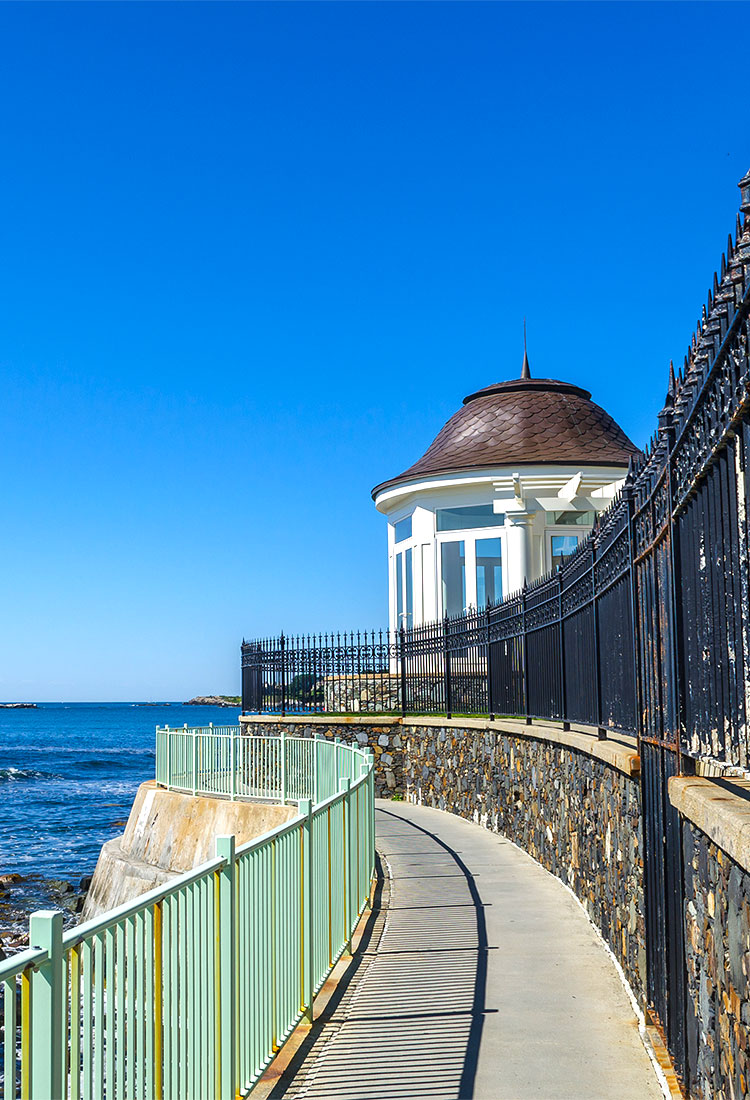As one of the oldest defined regions in the United States, New England is filled with history everywhere you look. From the country’s humble colonial beginnings to the opulence of the Gilded Age, the Northeast is defined by its past. Whether you’re a hardcore history buff or simply interested in learning how people used to live, here are our favorite historical sites to visit in each New England state.
Cliff Walk – Newport, Rhode Island
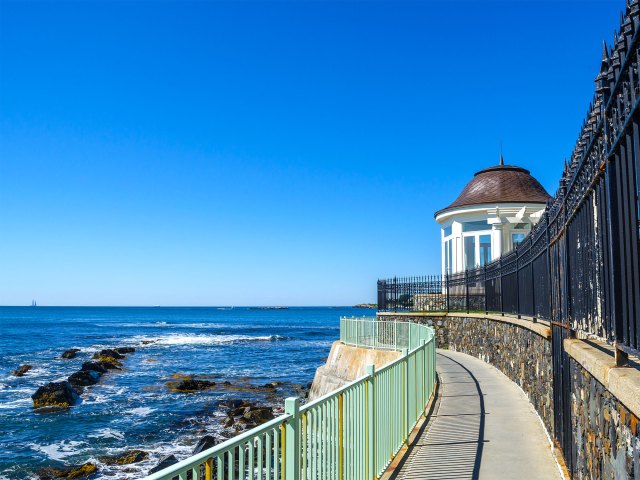
Designated as a National Recreation Trail in 1975, Newport’s Cliff Walk winds 3.5 miles along the scenic Rhode Island coastline. Founded in 1703, Newport is steeped in history, and the same trail has been used for hundreds of years — first by the Narragansett Indigenous peoples, then by European settlers and later by wealthy landowners during the Gilded Age.
The trail crosses Newport’s Historic District, providing views of the city’s incredible architecture from the 19th century, such as the Breakers, the spectacular summertime mansion commissioned by Cornelius Vanderbilt II in the 1890s. Along the section dubbed Millionaire’s Row, there’s also Rosecliff Mansion, with its Versailles-inspired garden; a stunning French chateau called the Elms; and the eponymous Marble House, featuring 500,000 cubic feet of marble. All of these stunning estates can be spotted from the Cliff Walk.
Concord and Lexington – Massachusetts
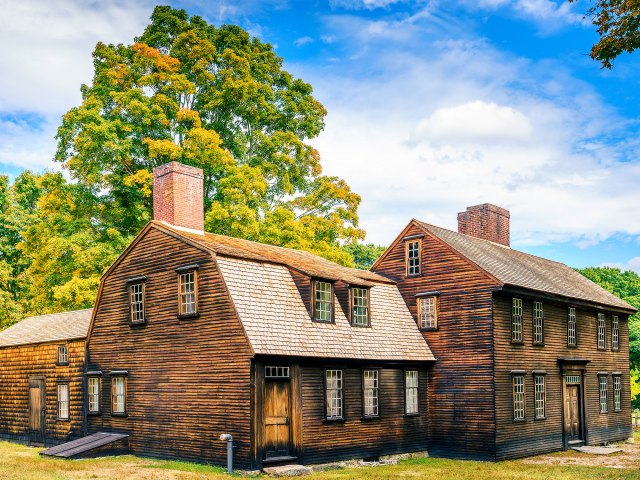
About 25 miles northwest of Boston, the neighboring towns of Concord and Lexington are awash in U.S. history. Minute Man National Historical Park spans both towns, allowing Revolutionary War buffs to view the first battle sites in the fight against the British. Pay a visit to Old North Bridge along the Concord River to see where the “shot heard round the world” was fired, or stop by Buckman Tavern, a watering hole for the colonial militia as they awaited the oncoming Redcoats.
Concord also has its fair share of literary history. Visit the former home of American essayist Ralph Waldo Emerson, who lived in the stately house from 1835 until his death in 1882. Or meander around Walden Pond, where Emerson’s protégé, Henry David Thoreau, took a two-year long sabbatical to observe nature and write. Then stop by Orchard House, where acclaimed author Louisa May Alcott wrote her famous novel Little Women in 1868.
Mark Twain House – Hartford, Connecticut
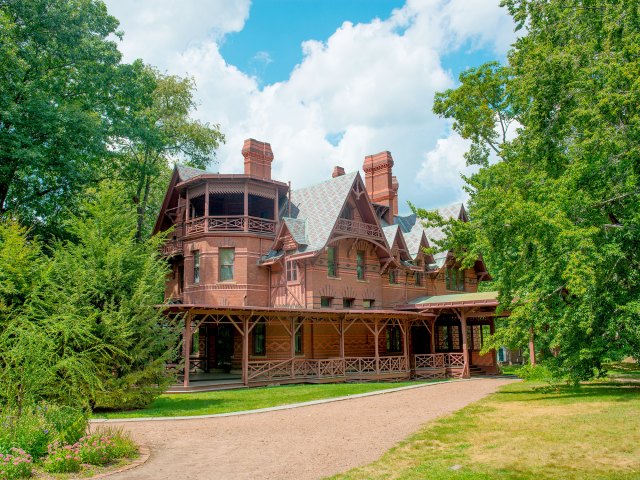
Located in Hartford, Connecticut, the Mark Twain House and Museum draws history buffs, architecture fans, and literary lovers alike — for good reason. The impressive 11‚500-square-foot house was commissioned in 1874 by Samuel Clemens himself (best known by his pen name Mark Twain). It was here that Clemens lived for 17 years, penning classic novels such as The Adventures of Tom Sawyer and A Connecticut Yankee in King Arthur’s Court.
Today, the three-story, 25-room Gothic home is open for tours every day except Tuesdays. On the General House Tour, docents share anecdotes about Clemens, his wife Olivia, and their three daughters from when they resided in the home. For an even more immersive experience, the Living History Tour recreates a day in the life of the author, with actors roleplaying his family members, friends, and house employees during the tour.
Strawbery Banke – Portsmouth, New Hampshire

Before its modern-day iteration as a bustling port city, Portsmouth, New Hampshire was a small fishing village called Strawbery Banke. The name was derived from the acres of wild strawberries that grew along the banks of the Piscataqua River, discovered by settlers in the early 17th century.
Today, visitors to Portsmouth can see the village as it once was at the Strawbery Banke Museum. The 10-acre living history museum recreates colonial village life, complete with historic houses and gardens, costumed roleplayers, and traditional craft demonstrations, such as barrel-making and weaving. The museum also pays homage to the Indigenous Abenaki culture, with the Discovery Center detailing the stories, traditions, and pastimes of the “People of the Dawnland.”
Shelburne Museum – Shelburne, Vermont
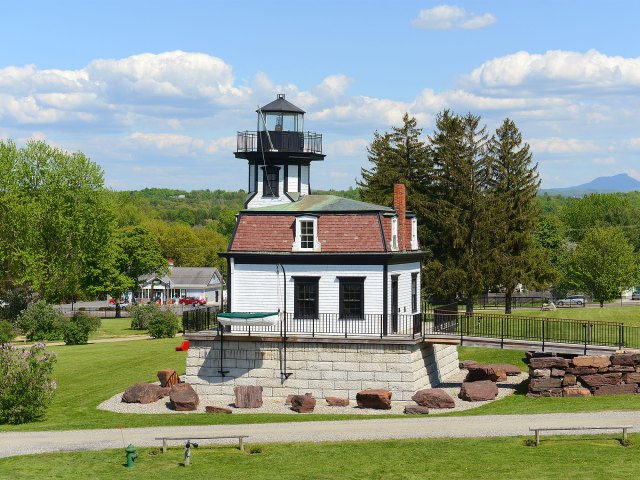
Located seven miles south of Burlington, Vermont, the Shelburne Museum is one of the largest art and history museums in New England. Set on 45 acres, the museum features an eclectic collection, including horse-drawn vehicles, folk art, impressionist paintings, old toys, and circus memorabilia. In addition to these permanent exhibits, the Shelburne offers annually rotating exhibitions, including an upcoming one featuring inflatable sculptures.
Established in 1947 by the Webb Family, the museum’s 39 buildings include houses, barns, a jailhouse, a lighthouse, and even a 220-ton steamboat, the Ticonderoga. Many of these structures recreate a slice of Vermont life from earlier time periods, including an apothecary shop from the late 19th century, log homes from colonial Vermont, and a 17th-century blacksmith shop complete with live demonstrations.
Maine Maritime Museum – Bath, Maine

Situated on the shores of the Kennebec River in Bath, Maine, the Maine Maritime Museum details the state’s impressive maritime history. Spread over 15 structures and 20 acres, the museum features exhibit galleries, a historic shipyard, and a research library that houses thousands of ship plans, charts, and manuscripts. The museum also maintains a Victorian-era home that once belonged to a prominent shipbuilding family, giving visitors a peek into life in the “City of Ships” during its heyday in the mid-19th century.
The museum also offers lighthouse and nature cruises on the Kennebec River; a full-size sculpture of Wyoming, the largest wooden sailing vessel built in North America; and Into the Lantern, a lighthouse replica that provides an immersive experience from inside the lighthouse lantern room. The museum is open daily, with tours of a real-life, working shipyard, Bath Iron Works, available seasonally.
More from our network
Daily Passport is part of Optimism, which publishes content that uplifts, informs, and inspires.






